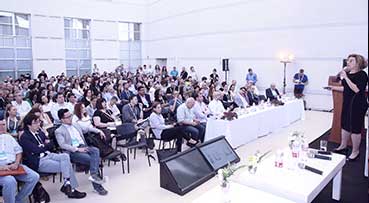With 14,000 Disneyland workers gearing up for a major strike, will you rethink your plans to visit Disney parks amid allegations of exploitation?
Disneyland is famously known as “The Happiest Place on Earth,” a brand promise that attracts millions of visitors each year. However, recent labor disputes have starkly contrasted the park’s public image and the realities faced by its employees. The disparity between a company’s brand and its employer brand is surprising in today’s evolving landscape, from both an employer and consumer perspective. There’s a strong link between employee satisfaction and customer experience. Happy employees provide better service, directly impacting customer satisfaction. At Disneyland, workers who feel underpaid or mistreated may struggle to maintain the “magical” experience guests expect, potentially tarnishing the park’s reputation. Moreover, visitors expecting a fairy tale-like experience might now view the park differently given these allegations, damaging their experience.
To grasp the significance of this gap, let’s delve into the concept of pivotal roles within the organization. In 2007, I met John Boudreau, co-author of “Beyond HR: The New Science of Human Capital,” and have often cited his perspective on “pivotal roles”—employees who have the greatest impact on the bottom line. Boudreau used roles in Disney parks as an example of where we might miss who really are the pivotal roles for customer experience. According to him, the most pivotal roles at Disneyland are not necessarily the most visible ones, like Mickey Mouse, but rather the street sweepers and other essential workers who directly enhance the guest experience.
While we might think Mickey Mouse is the most important “employee” in the park, there isn’t a big difference between a “good” Mickey and a “bad” Mickey because essentially Mickey is an employee in a smiling suit. In contrast, street sweepers can make a substantial difference because they do more than just clean. They maintain the park’s pristine condition, guide visitors, assist lost guests, and ensure a pleasant environment. Their ability to manage these interactions effectively significantly enhances the guest experience.
So, how is it that Disney executives don’t understand that the people whose roles are crucial in creating the magical experience at Disneyland feel mistreated in “The Happiest Place on Earth”?
Wells Fargo: Brand Promise vs. Reality
Sometimes it helps to see what happens to other organizations that didn’t consider how their culture and practices affect their business outcomes. About a decade ago, Wells Fargo marketed itself as a trustworthy and customer-centric institution, but employees, under pressure to meet unrealistic sales targets, created millions of unauthorized accounts, violating customer trust and contradicting the bank’s promise of ethical practices. The scandal exposed a significant disconnect between senior management and lower-level employees. The high-pressure culture and unethical practices not only harmed employees but also severely damaged the bank’s reputation and customer relationships.
To date, the Wells Fargo scandal continues to cast a long shadow over the company’s reputation. Despite efforts to rebuild its culture and improve customer service, the bank still struggles with the legacy of its past actions. Regulatory fines, legal settlements, and ongoing scrutiny have had significant financial and operational impacts. Additionally, regaining customer trust has been a slow and challenging process. The scandal serves as a cautionary tale about the importance of aligning internal practices with external brand promises, illustrating the long-term consequences of failing to do so.
Today’s consumers increasingly value authenticity. A disconnect between the public image a company projects and how it treats its employees can lead to perceptions of inauthenticity. Employees often serve as brand ambassadors, and their experiences can significantly influence public perception through social media and word-of-mouth. Negative employee experiences can quickly spread, impacting the companies’ public images and severely damaging customer trust and loyalty.
Modern consumers are becoming more socially conscious and often consider a company’s treatment of employees when making purchasing decisions. The labor disputes at Disneyland might influence some customers’ decisions to visit the park or support Disney products. It’s no longer enough to publish a glossy corporate social responsibility report; companies must ensure that their internal practices align with their external image to maintain customer trust and loyalty.
The situation at Disneyland underscores the importance of recognizing and supporting pivotal roles within an organization. By ensuring that essential workers like street sweepers are adequately compensated, valued, and provided with opportunities for growth, companies can enhance both employee satisfaction and customer experience. As Disney navigates these labor disputes, it will be crucial to address the internal practices that have led to these issues and align them with the company’s public image. Doing so is not only vital for maintaining the park’s reputation but also for securing long-term success in an increasingly socially conscious marketplace.

![large-AX1A2125-2[1]](https://niritcohen.com/wp-content/uploads/elementor/thumbs/large-AX1A2125-21-pnzedcs72atx5aeurqytqdiihxixlq02re9mlz805s.jpg)






